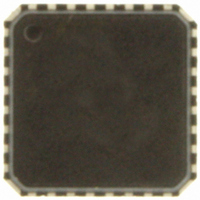ADT7462ACPZ-5RL7 ON Semiconductor, ADT7462ACPZ-5RL7 Datasheet - Page 32

ADT7462ACPZ-5RL7
Manufacturer Part Number
ADT7462ACPZ-5RL7
Description
IC TEMP/VOLT MONITOR 32-LFCSP
Manufacturer
ON Semiconductor
Datasheet
1.ADT7462ACPZ-5RL7.pdf
(81 pages)
Specifications of ADT7462ACPZ-5RL7
Function
Fan Control, Temp Monitor
Topology
ADC, Comparator, Multiplexer, Register Bank
Sensor Type
External & Internal
Sensing Temperature
-40°C ~ 125°C, External Sensor
Output Type
SMBus™
Output Alarm
No
Output Fan
Yes
Voltage - Supply
3 V ~ 5.5 V
Operating Temperature
-40°C ~ 125°C
Mounting Type
Surface Mount
Package / Case
32-LFCSP
Supply Voltage (max)
5.5 V
Supply Voltage (min)
3 V
Maximum Operating Temperature
+ 125 C
Minimum Operating Temperature
- 40 C
Lead Free Status / RoHS Status
Lead free / RoHS Compliant
Other names
ADT7462ACPZ-500RL7
ADT7462ACPZ-500RL7
ADT7462ACPZ-500RL7TR
ADT7462ACPZ-500RL7TR
ADT7462ACPZ-5RL7TR
ADT7462ACPZ-500RL7
ADT7462ACPZ-500RL7TR
ADT7462ACPZ-500RL7TR
ADT7462ACPZ-5RL7TR
Available stocks
Company
Part Number
Manufacturer
Quantity
Price
Company:
Part Number:
ADT7462ACPZ-5RL7
Manufacturer:
ON Semiconductor
Quantity:
135
PWM Duty Cycle Registers
Register 0xAA PWM1 Duty Cycle = 0x00 (0% default)
Register 0xAB PWM2 Duty Cycle = 0x00 (0% default)
Register 0xAC PWM3 Duty Cycle = 0x00 (0% default)
Register 0xAD PWM4 Duty Cycle = 0x00 (0% default)
user can keep track of the current duty cycle on each PWM
output, even when the fans are running in automatic fan
speed control mode or acoustic enhancement mode.
Programming the Automatic Fan Speed Control Loop
control loop, use of the ADT7462 evaluation board and
software is strongly recommended while reading this
section.
understanding of the automatic fan control loop and
provides step−by−step guidance on effectively evaluating
and selecting critical system parameters. To optimize
system characteristics, the designer needs to carefully plan
system configuration, including the number of fans, where
they are located, and what temperatures are being measured
in the particular system.
the system thermal characterization should also be involved
at the beginning of the process.
Figure 50. Control PWM Duty Cycle Manually with a
By reading the PWMx current duty cycle registers, the
Note that to better understand the automatic fan speed
This section provides the system designer with an
The mechanical or thermal engineer who is tasked with
Resolution of 0.39%
VARY PWM DUTY
CYCLE WITH 8-BIT
RESOLUTION
http://onsemi.com
32
Automatic Fan Control Overview
based upon the measured temperature. This is done
independently from CPU intervention once initial parameters
are set up.
three remote temperature channels that can be connected to
a CPU on−chip thermal diode (available on Intel Pentium
class and other CPUs/GPUs). These four temperature
channels can be used as the basis for automatic fan speed
control to drive fans using pulse−width modulation (PWM).
optimizing fan speed according to accurately measured
temperature. Reducing fan speed can also decrease system
current consumption. The automatic fan speed control mode
is very flexible, owing to the number of programmable
parameters, including T
T
a given fan, are critical because they define the thermal
characteristics of the system. The thermal validation of the
system is one of the most important steps in the design
process, so these values should be selected carefully.
control circuitry on the ADT7462. From a systems−level
perspective, up to four system temperatures can be
monitored and used to control four PWM outputs. The four
PWM outputs can be used to control up to eight fans. The
ADT7462 allows the speed of eight fans to be monitored.
The Remote 1 and Remote 2 temperature channels have a
thermal calibration block, allowing the designer to
individually configure the thermal characteristics of those
temperature channels. For example, the CPU fan can be run
when CPU temperature increases above 60°C and a chassis
fan can be run when the local temperature increases above
45°C. At this stage, the designer has not assigned these
thermal calibration settings to a particular fan drive (PWM)
channel. The right side of Figure 51 shows controls that are
fan−specific. The designer has control over individual
parameters such as minimum PWM duty cycle, fan speed
failure thresholds, and even ramp control of the PWM
outputs. Automatic fan control, then, ultimately allows
graceful fan speed changes that are less perceptible to the
system user.
RANGE
The ADT7462 can automatically control the speed of fans
The ADT7462 has a local temperature sensor and up to
Automatic fan speed control reduces acoustic noise by
Figure 51 gives a top−level overview of the automatic fan
values for a temperature channel and, therefore, for
MIN
and T
RANGE
. The T
MIN
and












